Scientists and researchers often boast about the efficiency of modern-day farming and the fact that today’s agriculture requires fewer farmers on more acres. But missing from their analysis is the long list of consequences: from health risks from increased to degradation of the environment and ironically, the ‘growing’ problem – superweeds.
An issue that has been globally impacting agriculture productivity across the planet, superweeds, aka the weeds that man can longer kill, has been in the news for several years. The impacts of herbicide-resistant (HR) crops on an accidental selection of resistant weeds; and introgression of herbicide-resistant genes in weeds are the other serious challenges. Multiple group resistance has been reported in several weeds in both developing and developed countries with possibly serious consequences for stable crop production in the coming years.
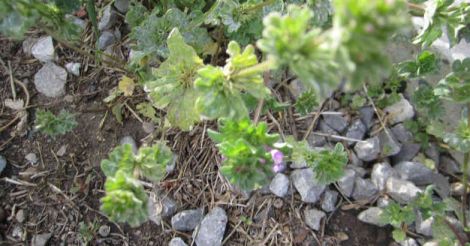 Photo: Saikat Kumar Basu
Photo: Saikat Kumar BasuUrban pressures to reduce pesticide use, herbicide-resistance, and high-input costs are making governments think about adopting Integrated Weed Management (IWM) and sustainable agricultural practices for tackling this problem. Hence, what is needed now is to use ecologically and economically robust weed management system with a focus on IWM and Pesticide-Free Production (PFP).
The escalating problems of HR weeds across the planet in all crop-producing countries need to be efficiently resolved through collective approaches. We need a new outlook for delaying and/or managing HR weeds in a comprehensive manner. IWM needs to focus on combining several weed management techniques, tools and approaches into diverse cropping systems with special focus on the proper crop health and management. IWM needs to be successfully integrated with all other crops and crop production systems that influence our natural ecosystems.
Some of the important aspects for IWM are listed as follows.
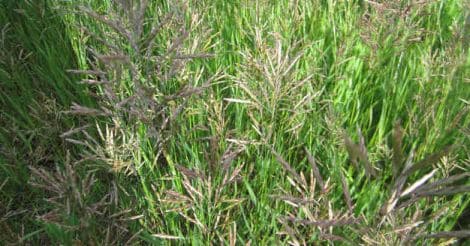 Photo: Saikat Kumar Basu
Photo: Saikat Kumar Basu1. First and foremost is the need to understand weed population dynamics: like seed dormancy, seed development, and production, population genetics, dynamics of seed germination and seed emergence, weed-crop interactions, population shifts, the spatial distribution of weeds and factors regulating them.
2. Successful weed management will involve the combination of various strategies along with proper resource utilization and better understanding of weed-crop interactions and managing weed competitions under various agro-climatic conditions.
3. Banding of herbicide over the crop row and using cultivation to control weeds between the rows is a proven method to reduce herbicide applications. Banding is an excellent tool for reducing herbicide use for crop producers/farmers practicing inter-row cultivation approach.
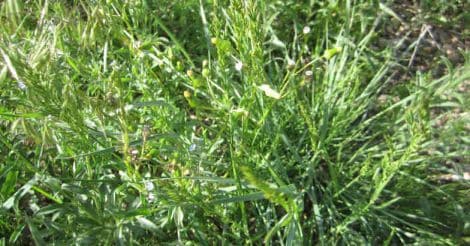 Photo: Saikat Kumar Basu
Photo: Saikat Kumar Basu4. Use of Global Positioning System (GPS) and Geographic Information System (GIS) can greatly help in extensive weed mapping, daily and historical record keeping on weed emergence, diversity, resistant species, distribution and maturity (flowering) and in extensive weed monitoring and surveillance.
5. Using regular and appropriate scientific management in proper crop. as well as herbicide rotations, to deal with herbicide resistance.
6. Encouraging physical (tillage, harrowing etc), biological (use of mycoherbicides, new natural plant products, allelopathic cover crops, competitive crop cultivars) weed control in the crop fields.
7. Education and awareness among crop producers, farmers, wholesalers, retailers, distributors regarding IWM.
8. Seeding and harvest dates, as well as cropping system diversity, crop competitiveness, and crop health, are important practices to deal with challenges of herbicide-resistant weeds.
9. Proper management of nutrient application in the field, as well as management of chemical residues, is important for dealing with herbicide resistance among obnoxious weeds.
10. Judicious and responsible use of herbicides by using reduced herbicide rates below those recommended on the label and avoiding excess over an application at all times.
11. Use of highly clean and certified weed-free seed, as well as using modern seed coat technologies and clean, sterilized and decontaminated farm equipment, are important steps in IWM practices.
12. Avoiding weed encroachment areas and practising proper management in keeping farm and adjoining areas weed-free help in efficiently cutting down weed build-up process. This approach can also contribute towards eradicating sporadic weed outburst in the fields from time to time and in cutting down potential weed reservoirs around sensitive crop production area.
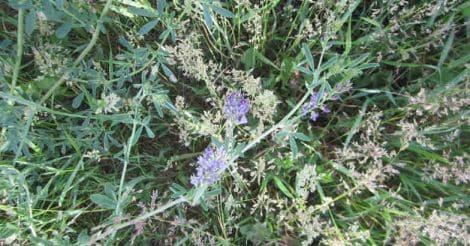 Photo: Saikat Kumar Basu
Photo: Saikat Kumar Basu13. Proper and scientific soil, nutrient and fertilizer management is important for keeping cropping area weed free.
14. Using the latest and most advanced herbicides and surfactants with new chemistry, formulations, applications and delivery methods to challenge obnoxious weeds keep weeds from coming back to the same fields every year.
15. Optimizing application timing, rate structure and promotion of new herbicides for the commercial crop production market is necessary to help in the process of herbicide rotation and avoid using same or similar groups of herbicides over long periods of time. This approach can effectively reduce the risk of generating potential HR weeds.
16. Avoiding any high-risk practices that can facilitate weed infestations in the crop fields.
17. Use of pollinator/bee mix (specialized mixes of annual and/perennial legume and/grasses along with native/indigenous/local wildflowers) and fast-growing surface crops (annual/perennial legumes like alfalfa, clovers, sainfoin, vetch, beans, fenugreek, field peas etc) to avoid keeping uncultivated or hard-to-reach areas of the farms and adjoining cropping areas weed-free. It is better to have some crops or environment-friendly plants and/crops to grow in open or unused or uncultivated areas/locations or otherwise agronomically unsuitable locations (water/salt impacted areas) that can fix atmospheric N, reclaim soil (phytoremediation) and attract pollinators (environmental stewardship) instead of a standing weedy patch harboring reserve weed populations
18. Intercropping also helps to avoid providing free space for weeds to thrive in the field.
19. New farming practices such as Pesticide-Free Production (PFP) and organic farming should be encouraged to avoid excess use of agricultural chemicals (synthetic fertilizers and pesticides).
20. Research and development on weeds in terms of weed density, diversity, propagation, ecology, species-specific life cycle, herbicide resistance, crop-weed modeling are important to design and develop new and innovative measures for effective and highly efficient weed control measures for the future.
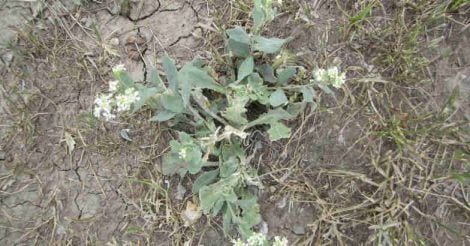 Photo: Saikat Kumar Basu
Photo: Saikat Kumar BasuWeed management is a challenging task but not impossible if properly monitored, carefully planned and judiciously executed throughout the cropping season. Modern farmers need to be vigilant, well-rounded and knowledgeable regarding common local weeds impacting high crop production and their appropriate control measures through IWM strategies.
(The author is a Canada and India based freelance journalist specializing in global geo-political, strategic and foreign policy issues, science & technology and environment & conservation related themes.)

























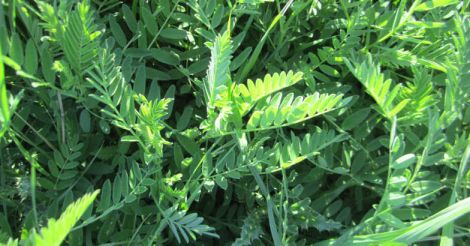 Photo: Saikat Kumar Basu
Photo: Saikat Kumar Basu